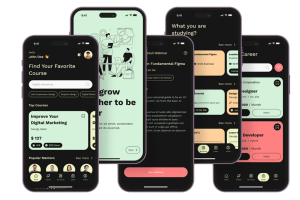What is Prompt Engineering and Why Does It Matter for Businesses?
Prompt engineering is the process of designing and refining inputs for AI models, particularly language models, to achieve optimal outputs. By carefully crafting prompts, businesses can enhance the performance of AI systems, leading to more accurate and relevant results. As artificial intelligence becomes integral to various business operations—from customer service to content creation—understanding prompt engineering is crucial. It allows companies to leverage AI technology effectively, streamline processes, and gain a competitive edge in their industries.
The Basics of Prompt Engineering
At its core, prompt engineering involves understanding how AI models, like GPT-3 or similar systems, interpret and respond to input text. The quality and clarity of the prompt significantly influence the output. Effective prompts are concise yet informative, guiding the AI towards generating responses that align with the user’s intent.
Business professionals must recognize that not all prompts yield the same outcomes. Exploring various wording, context, and structure can dramatically improve results. For example, asking a model to “Summarize this report” versus “Can you highlight the main points and insights from this report?” demonstrates two different approaches that can lead to varying levels of detail and relevance.
Why Businesses Should Embrace Prompt Engineering
In an era where customer expectations are continuously rising, organizations must utilize AI that delivers personalized, accurate, and timely information. Prompt engineering allows businesses to fine-tune their AI interactions, ensuring they are both user-friendly and effective. By adopting these optimized prompts, companies can resolve customer queries more quickly, automate workflows, and maintain high standards of service.
Moreover, as companies increasingly rely on AI for insights and decision-making, understanding how to engineer prompts becomes a strategic asset. Organizations equipped with prompt engineering skills can significantly enhance productivity, reduce operational costs, and better align outputs with organizational goals. This adaptability is vital in an ever-evolving marketplace where speed and accuracy are paramount.
Applications of Prompt Engineering in Business
Prompt engineering finds numerous applications across various industries. In customer support, well-crafted prompts can guide chatbots to understand user queries better and provide relevant responses, improving customer satisfaction. In marketing, businesses can leverage AI to generate creative content, from blog posts to social media updates, by feeding the model structured prompts that direct it toward the desired tone and style.
Additionally, in data analysis, prompt engineering can help extract actionable insights from vast amounts of unstructured data. For instance, by crafting specific prompts, businesses can obtain summaries, comparisons, or key takeaways from extensive reports, enabling faster decision-making processes. This level of effectiveness can ultimately drive higher engagement and foster loyalty among customers.
Challenges and Considerations in Prompt Engineering
While prompt engineering presents immense advantages, businesses must also navigate certain challenges. One significant issue is the potential for bias in AI responses, stemming from the prompts themselves or the underlying training data. Companies must be diligent in crafting prompts that promote fairness and inclusivity, as biased outputs can have damaging consequences on brand reputation and customer trust.
Another consideration is the need for continuous iteration. Effective prompt engineering is not a one-and-done task; it requires ongoing testing and refinement. Businesses should adopt a mindset of experimentation, consistently assessing the effectiveness of different prompts and adapting as needed. This iterative approach can also help organizations stay ahead of competitors who may be slower to adopt AI improvements.
Future Trends in Prompt Engineering
The landscape of prompt engineering is continually evolving alongside advancements in AI technology. As models become more sophisticated, the way prompts are constructed and utilized will likely change. It is essential for businesses to stay informed about these trends to maximize their benefits from AI tools effectively.
Furthermore, with the rise of multimodal AI, which can process both text and images or videos, prompt engineering will require additional layers of complexity. Organizations that can skillfully integrate prompt engineering across different AI functionalities will distinguish themselves in their industries. Embracing these trends will empower businesses not just to adapt but to thrive in a digital-first world.
Conclusion
In conclusion, prompt engineering is a vital skill for businesses aiming to harness the full capabilities of AI technology. By crafting strategic and effective prompts, companies can refine their AI outputs, drive better customer engagement, and enhance operational efficiency. As AI continues to transform the business landscape, understanding and implementing prompt engineering techniques will be essential for maintaining a competitive edge and fostering innovation. Companies that invest in this capability will not only improve their AI interactions but also establish themselves as leaders in their respective fields.
FAQs
What skills are needed for effective prompt engineering?
To be effective at prompt engineering, professionals should possess creativity, a strong understanding of AI systems, and the ability to communicate clearly. Some analytical skills can also help assess the quality of the outputs received.
How can I start learning prompt engineering?
Learning prompt engineering can start with experimenting on AI platforms like OpenAI’s GPT. Engaging with online courses, tutorials, and communities focused on AI and machine learning can also offer invaluable resources.
Can prompt engineering replace traditional methods of data analysis?
Prompt engineering enhances traditional methods rather than replacing them entirely. It offers an additional tool for data analysis by enabling quicker insights and more dynamic interactions with data.






